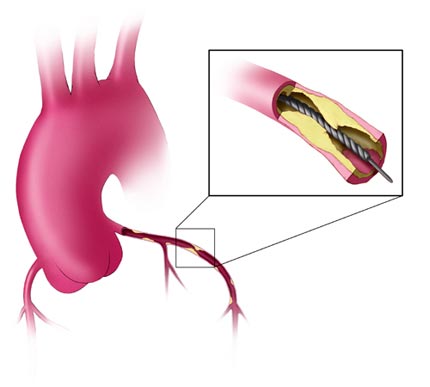Atherectomy
What is an atherectomy?
An atherectomy is a procedure that utilizes a catheter with a sharp blade on the end to remove plaque from a blood vessel. The catheter is inserted into the artery through a small puncture in the artery, and it is performed under local anesthesia. The catheter is designed to collect the removed plaque in a chamber in the tip, which allows removal of the plaque as the device is removed from the artery. The process can be repeated at the time the treatment is performed to remove a significant amount of disease from the artery, thus eliminating a blockage from atherosclerotic disease.
Why do I need this procedure?
The goal of treatment is to eliminate the build-up of plaque in your arteries.
You may need this atherectomy procedure if your arteries become too narrowed or blocked from plaque inside the artery walls. If arteries are blocked, blood cannot get through to nourish the tissues, causing the muscles of the lower extremities to cramp and lose strength.
An atherectomy is especially helpful for treating blockages in arteries that occur around branches or in vessels that are not easily treated with stents.

